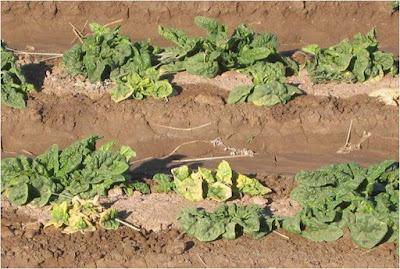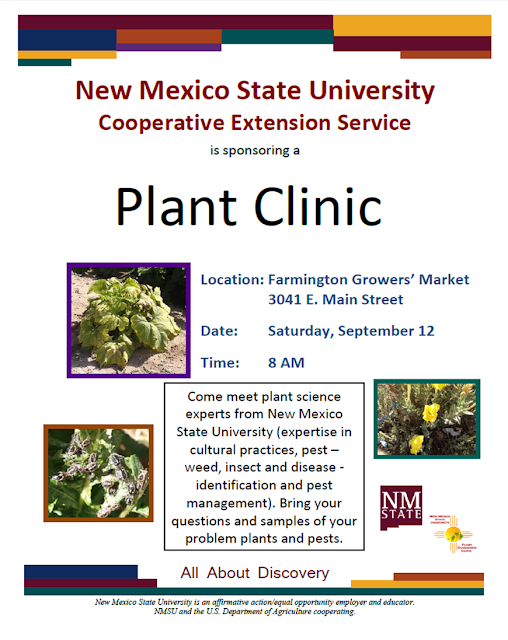 |
| Shepherd’s purse (Capsella bursa-pastoris) infestation (Photo L. Beck NMSU) |
Featured Diagnosis: Shepherd’s purse (Capsella bursa-pastoris) is a weed that has become well-established
throughout the state of New Mexico. Though this weed is generally considered to
be a winter annual, its’ ability to tolerate a wide range of temperatures often
allows for germination and growth at multiple points throughout the year.
Germination generally occurs in the late summer, early autumn, and even in the
early spring depending on temperatures and moisture. It can be found in
multiple cropping systems including nursery, agronomic and vegetable crops,
landscape, horticulture, and roadsides.
The plant initially grows as a basal rosette with leaves that closely resemble those of dandelion as the plant matures. One way to distinguish shepherd’s purse rosette leaves from dandelion is to look at the teeth points on the outer edges (margins) of the leaves. The margin teeth of dandelion tend to point downwards towards the center of the rosette while shepherd’s purse teeth tend to be more rounded when young, and become larger and more deeply toothed (pointed straight) as they mature.
Additionally the
leaves of the shepherd’s purse tend to be smooth to lightly hairy on the top
and hairy on the bottom. As the plant matures it forms erect, slender stems
that hold the small white flowers and unique fruit pods anywhere from 3 to 18
inches up in the air. The fruit (or seed pods) generally appear from April to
September, though temperatures often allow for seed production throughout the
year. Fruits are easily identifiable as a triangle-heart-shaped, 2-chambered
(separated by a dividing line down the middle), flattened pods that hold
numerous seed per chamber. Each plant can produce thousands of dull reddish to
yellowish seed capable of surviving for multiple years in the soil.
The fruit can taste peppery and is sometimes added to salad
greens as a spice; however, foliage and seeds contain digestive irritants which
can cause stomach problems when consumed in higher quantities. Management
options like repeated cultivation to prevent seeds from maturing, and manually
removing plants (including the shallow taproot) before they produce viable seed,
can help maintain small populations in gardens and landscapes. While the
rosette foliage might be confused with other members of the mustard family, the
flat, heart-shaped pods easily distinguish shepherd’s purse from its’ mustard
relatives.
 |
| Shepherd’s purse (Capsella bursa-pastoris) rosette stage. (Photo: L. Beck NMSU) |
 |
| Shepherd’s purse (Capsella bursa-pastoris) pressed specimen. (Photo L. Beck NMSU) |
 |
| Shepherd’s purse (Capsella bursa-pastoris) fruit (Photo L. Beck NMSU) |
 |
| Shepherd’s purse (Capsella bursa-pastoris) inflorescence. (Photo L. Beck NMSU) |








